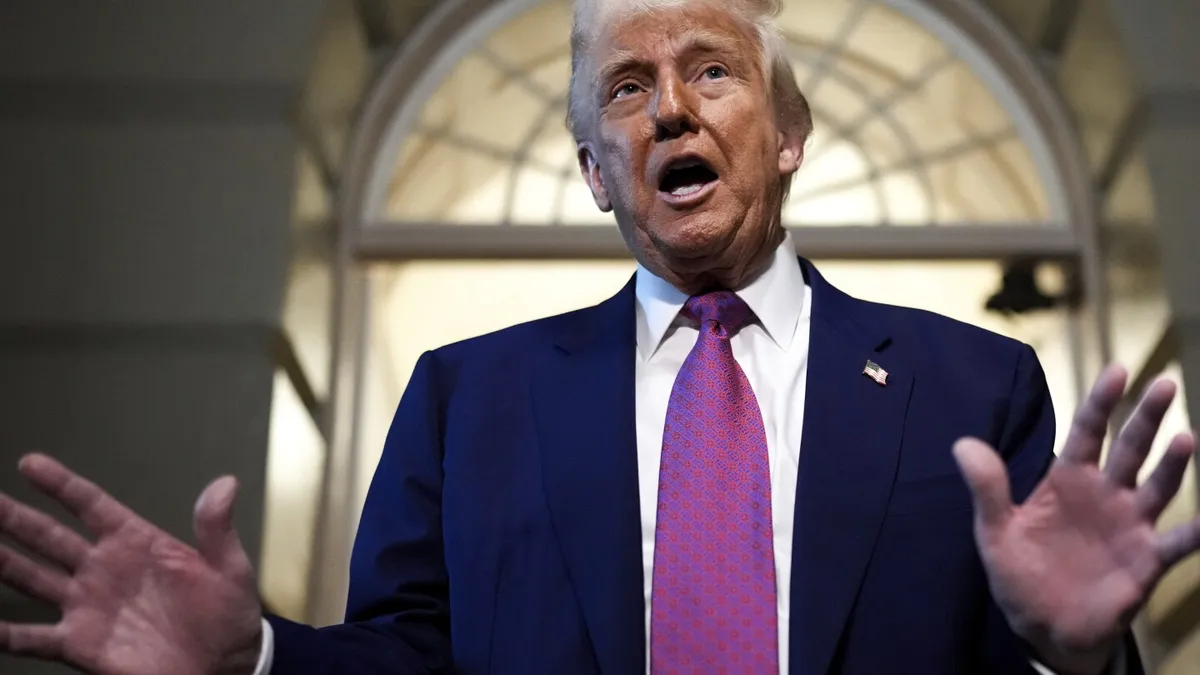
WASHINGTON (AP) — On Tuesday, President Donald Trump is anticipated to unveil his vision for the ambitious Golden Dome missile defense program. While this proposed initiative will not be the most expensive option put forth by the Pentagon, it is expected to cost taxpayers tens of billions of dollars and require several years for implementation. If successfully realized, the Golden Dome program would represent a historic first for the United States, as it aims to deploy weapons in space capable of intercepting and destroying incoming missiles mid-flight.
In conjunction with the announcement, Trump is likely to name Gen. Michael Guetlein, currently serving as the vice chief of space operations, as the official responsible for overseeing the progress of the Golden Dome initiative. This program is designed to integrate both ground and space-based capabilities, equipping the U.S. with the tools necessary to detect and neutralize missiles at all four critical phases of an attack: before launch, during early flight, midcourse, and in the final descent toward a target.
For the past several months, Pentagon planners have been working on various options for this missile defense system. These options have been categorized into three tiers based on their potential costs: medium, high, and “extra high.” According to a U.S. official, the administration has settled on the “high” version, which is estimated to carry an initial price tag ranging from $30 billion to $100 billion. The cost differences among these tiers primarily hinge on the number of satellites and sensors needed in space, along with the inclusion of space-based interceptors.
Recently, the Congressional Budget Office projected that the space-based elements of the Golden Dome program could incur costs as high as $542 billion over the next two decades. In his proposed tax break bill currently under consideration in Congress, Trump has requested an initial allocation of $25 billion for this ambitious initiative.
The Pentagon has long warned that the latest missile technologies developed by China and Russia are advanced enough to necessitate updated countermeasures. The new satellites and interceptors that would be added under the Golden Dome program are aimed at providing a robust defense against these sophisticated missiles, especially during their early stages of flight or midcourse.
At a recent hearing, Gen. Chance Saltzman, head of the U.S. Space Force, articulated that the envisioned space-based weapons for the Golden Dome program “represent new and emerging requirements for missions that have never before been accomplished by military space organizations.” This emphasizes the critical nature of the program in the context of modern warfare.
Despite the ambitious goals of the Golden Dome initiative, funding for the project remains absent, and the program is still regarded as being in the “conceptual stage,” as noted by newly confirmed Air Force Secretary Troy Meink during a Senate hearing. Although President Trump has chosen the desired concept for the program, the Pentagon is still in the process of establishing the specific requirements that Golden Dome must fulfill—a departure from the usual protocol for developing new systems.
The Pentagon and U.S. Northern Command are currently drafting an initial capabilities document. This document is essential for Northern Command, which is tasked with homeland defense, to outline the operational needs that the Golden Dome system must address.
The United States already possesses a range of missile defense capabilities, including Patriot missile batteries provided to Ukraine for intercepting incoming missile threats, as well as an extensive network of satellites in orbit designed to detect missile launches. Many of these existing systems are expected to be integrated into the Golden Dome framework, enhancing the overall defensive posture of the United States.
In a decisive move, Trump directed the Pentagon to pursue the development of space-based interceptors through an executive order during the first week of his presidency, marking the beginning of this significant military initiative.